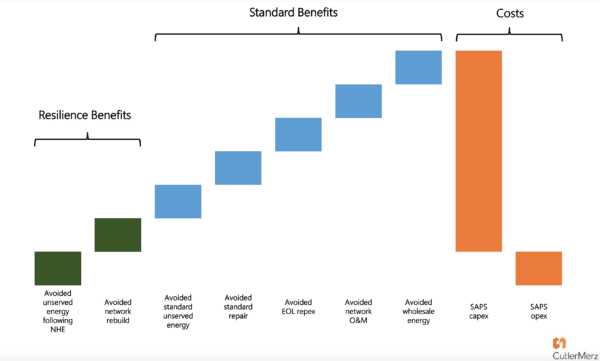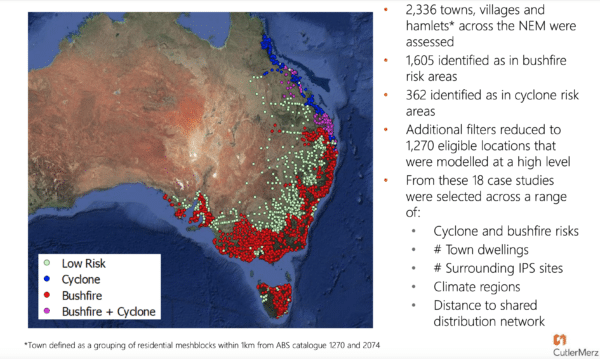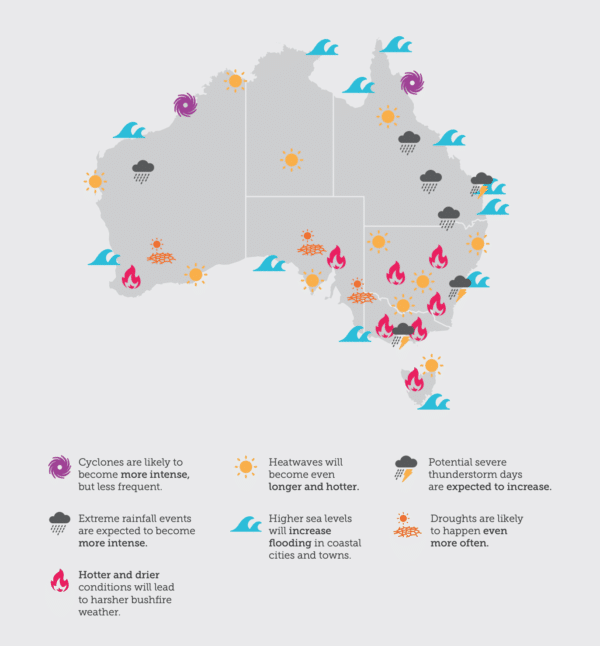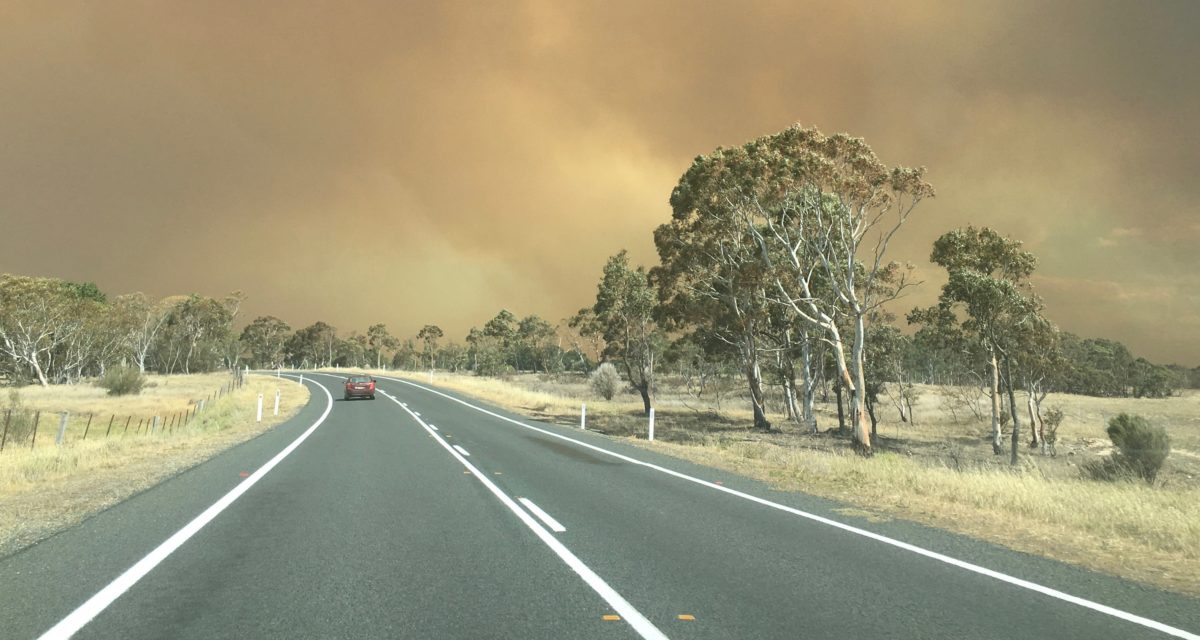A study commissioned by the Total Environment Centre and carried out by CutlerMerz, economic and engineering consultancy to the energy sector, has confirm that stand-alone power systems (SAPS) can improve the climate resilience of communities in bushfire and extreme-weather-prone zones, and provide a net economic benefit to all energy consumers served by the grid.
It’s expensive to replace electricity infrastructure, and edge-of-grid communities are often left powerless for long periods of time after disaster strikes.
The study, Network Resilience — Potential benefits of a requirement to provide for resilience, assessed more than 2,000 small towns, villages and hamlets in bushfire and cyclone risk areas across the National Electricity Market, calculating the savings in avoided outages and line replacements if the communities were self-sufficient in energy supply in the event that extreme conditions were to isolate them from the grid or bring down their electricity network.

Image: Total Environment Centre/CutlerMerz
The net economic benefit of transitioning these combined communities to SAPS was found to be between $980 million and $1.5 billion, but for the vast majority of towns the investment in stand-alone infrastructure only stacks up if the advantages of improved resilience — as opposed to pure cost-benefit analysis — are taken into account.
The study defines resilience as “the capacity of communities to prepare for, absorb and recover from natural hazard events and to learn, adapt and transform in ways that enhance these capacities in the face of future events”.
Between 192 and 244 communities were found to have a positive business case for going off grid, given the expectation of increasing climate risk.

Image: Total Environment Centre/CutlerMerz
The costs of business as usual
As the Total Environment Centre’s (TEC) energy market advocate, Mark Byrne points out, “Bushfires and other climate risks are increasing the cost of maintaining electricity supply, especially in rural and remote parts of Australia.”
Natural disaster and hazard events can affect electricity infrastructure in a number of ways, including strong winds and falling trees bringing down power poles and overhead lines; floodwaters inundating substations and underground assets, rendering them unusable; and bushfires burning through above-ground assets.
In addition, network infrastructure can itself spark bushfires on extreme-weather days.
The report found that in 2020 three applications were submitted by networks to recover “an unprecedented $42.67 million from customers as a result of the recent bushfire and severe weather events”.
The probability that such events will increase in frequency given the lack of concerted global effort to make meaningful reductions in carbon emissions, will result in increases in the cost of insurance to network service providers — an impost that will also ultimately be borne by customers.
Existing electricity rules, says Byrne, do not require distribution networks to consider how escalating climate risks change the business case for different models of supplying energy in the event that infrastructure is knocked out — they just tend to rebuild.
New rule would require NSPs to consider self-supporting energy models
The findings of the Network Resilience report, which was funded by Energy Consumers Australia, will now be used as the basis for the TEC to later this year submit a rule change request to the Australian Energy Market Commission (AEMC) that would explicitly require network businesses to provide for resilience when rebuilding infrastructure to serve edge-of-grid communities.
In Western Australia both state-government-owned energy suppliers, Western Power and Horizon Power, have successfully transitioned far-flung properties and communities to standalone energy systems, and achieved significant savings in the process.
October last year saw Western Power complete the Stage 1 rollout of stand-alone power systems (each comprising a solar array, battery and back-up generator) to 52 properties throughout the Mid West, Goldfields, eastern Wheatbelt and Great Southern regions. It calculates that even with servicing the systems throughout their expected life cycle, the utility will save $6 million dollars on not having to refurbish the network to ensure reliability of supply to those properties.
The rollout was preceded by a trial of stand-alone power systems at six properties, launched in 2016; over the three years of the trial, it was found that 90% of the power used was generated by solar (showing minimal reliance on the back-up diesel generators) and that the properties avoided more than 200 hours of power interruptions.
Byrne emphasises that there is “no substitute for decarbonising the energy system, but we need to recognise that climate change is here already …. so we need to plan accordingly”.

Image: Climate Council
This content is protected by copyright and may not be reused. If you want to cooperate with us and would like to reuse some of our content, please contact: editors@pv-magazine.com.









By submitting this form you agree to pv magazine using your data for the purposes of publishing your comment.
Your personal data will only be disclosed or otherwise transmitted to third parties for the purposes of spam filtering or if this is necessary for technical maintenance of the website. Any other transfer to third parties will not take place unless this is justified on the basis of applicable data protection regulations or if pv magazine is legally obliged to do so.
You may revoke this consent at any time with effect for the future, in which case your personal data will be deleted immediately. Otherwise, your data will be deleted if pv magazine has processed your request or the purpose of data storage is fulfilled.
Further information on data privacy can be found in our Data Protection Policy.